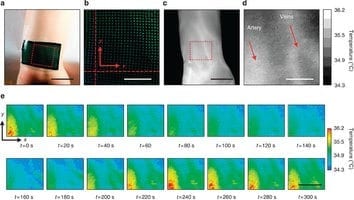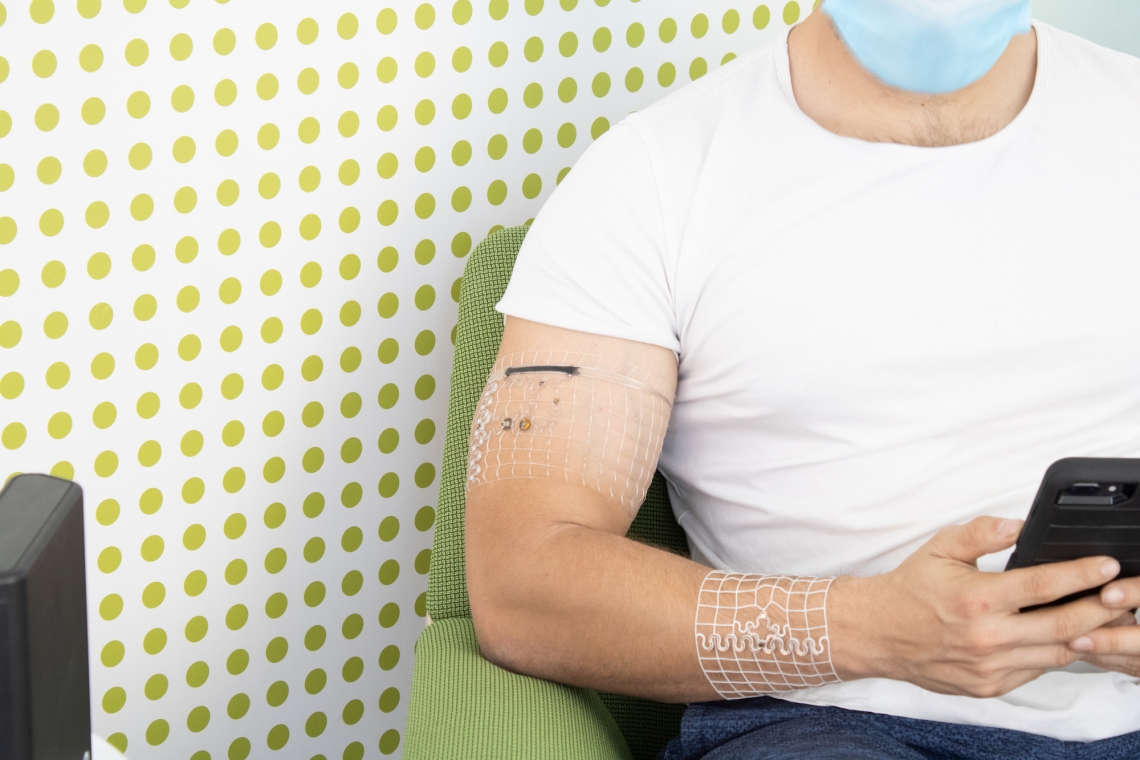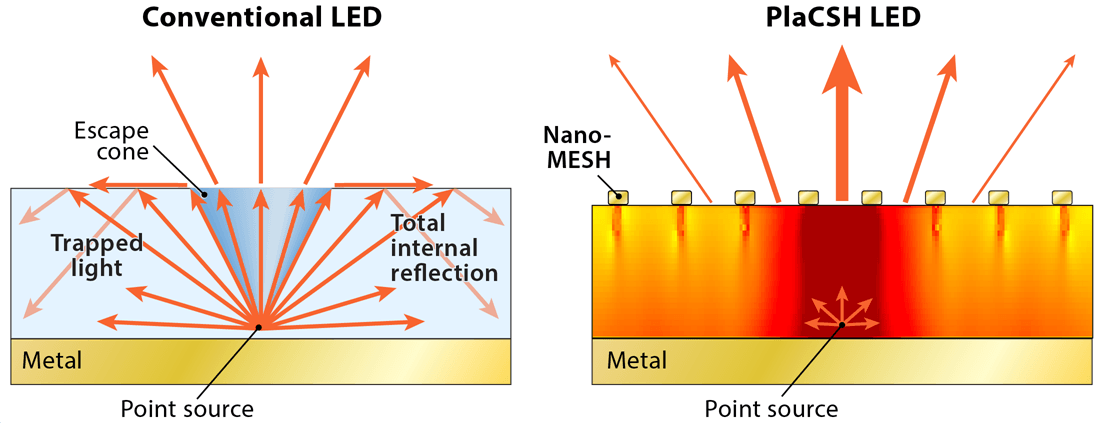
Thousands of liquid crystal data points give portable device its accuracy
A new wearable medical device can quickly alert a person if they are having cardiovascular trouble or if it’s simply time to put on some skin moisturizer, reports a Northwestern University and University of Illinois at Urbana-Champaign study.
The small device, approximately five centimeters square, can be placed directly on the skin and worn 24/7 for around-the-clock health monitoring. The wireless technology uses thousands of tiny liquid crystals on a flexible substrate to sense heat. When the device turns color, the wearer knows something is awry.
“Our device is mechanically invisible — it is ultrathin and comfortable — much like skin itself,” said Northwestern’s Yonggang Huang, one of the senior researchers. The research team tested the device on people’s wrists.
“One can imagine cosmetics companies being interested in the ability to measure skin’s dryness in a portable and non-intrusive way,” Huang said. “This is the first device of its kind.”
Huang led the portion of the research focused on theory, design and modeling. He is the Joseph Cummings Professor of Civil and Environmental Engineering and Mechanical Engineering at Northwestern’s McCormick School of Engineering and Applied Science.
The technology and its relevance to basic medicine have been demonstrated in this study, although additional testing is needed before the device can be put to use. Details are reported online in the journal Nature Communications.
“The device is very practical — when your skin is stretched, compressed or twisted, the device stretches, compresses or twists right along with it,” said Yihui Zhang, co-first author of the study and research assistant professor of civil and environmental engineering at Northwestern.
The technology uses the transient temperature change at the skin’s surface to determine blood flow rate, which is of direct relevance to cardiovascular health, and skin hydration levels. (When skin is dehydrated, the thermal conductivity property changes.)
The Latest on: Wearable medical device
[google_news title=”” keyword=”Wearable medical device” num_posts=”10″ blurb_length=”0″ show_thumb=”left”]
via Google News
The Latest on: Wearable medical device
- Low-income Latinos warming to wearable health tech, Northwestern researcher findson May 9, 2024 at 3:55 am
Low-income Latinos became increasingly more receptive to using wearable health monitoring devices during the COVID-19 pandemic, but barriers like affordability and accessibility must be addressed, ...
- How Wearable Technology Helps in Personal Injury Claimson May 8, 2024 at 12:24 pm
Wearable technology has become a constant presence in our lives. It tracks everything from our steps to our heart rates. We wear it while we exercise, during work, in the shower, and even when we ...
- COVID-19 pandemic changed attitudes toward wearable health devices, study findson May 8, 2024 at 7:50 am
The COVID-19 pandemic significantly increased interest in wearable health-monitoring devices among low-income Hispanic and Latine adults living in the U.S., a new Northwestern University study has ...
- Development of ultra-high-efficiency pure red light-emitting devices with enhanced color representationon May 8, 2024 at 6:38 am
DGIST Professor Jiwoong Yang's team in the Energy Science and Engineering Department has successfully manufactured high-performance, skin-attachable perovskite pure red light-emitting devices to ...
- Apple granted patent for ‘Wearable Device With Direct Audio’on May 7, 2024 at 5:00 pm
The patent relates generally to wearable devices, and, more particularly, to wearable devices with directional audio. In the patent Apple notes that audio headsets have acoustic speakers that sit on, ...
- Will Apple Shake up the Medical Device Industry After FDA’s Recent Decision?on May 6, 2024 at 12:38 pm
The Apple Watch’s atrial fibrillation tracking features have been given the green light to be used in clinical studies.
- 5 design tips from wearable neuromodulation device developer Avation Medicalon May 6, 2024 at 10:03 am
Avation Medical co-founders Jill Schiaparelli and Manish Vaishya developed a closed-loop neuromodulation wearable to treat overactive bladder.
- Wearable Brain Devices Market To Reach USD 895.1 Billion By 2032, Says DataHorizzon Researchon May 6, 2024 at 1:30 am
The wearable brain devices market size was valued at USD 285.1 Billion in 2023 and is expected to reach a market size of USD 895.1 Billion by 2032 at a CAGR of 13.6%.Fort Collins, Colorado, May 06, ...
- Digital devices can help clinicians prescribe physical activityon May 5, 2024 at 5:00 pm
Digitally measuring physical activity will be key to accelerating efforts to improve it. Wearable devices, including smart watches, smart rings, and smart phones tracking activity, are now used by ...
- Military Wearable Medical Device Market to Soar at 30.1% CAGR, Driven by Increasing Demand for Soldier Health Monitoringon May 2, 2024 at 8:30 am
Military Wearable Medical Device Market to Soar at 301 CAGR Driven by Increasing Demand for Soldier Health Monitoring ...
via Bing News










